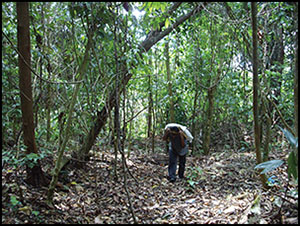Published online by Cambridge University Press: 17 February 2016

The cave of Kayuko Naj Tunich is believed to have been the location of the accession ceremonies for the royal dynasty of the ancient Maya Uxbenká polity in southern Belize. Little is known, however, about the structures referred to as the Kayuko Mound Group that lie close to the cave. Excavations have now provided evidence for the date of this complex, and experimental research has estimated the labour costs involved in its construction. The results suggest that while both the mound group and the cave were involved in the celebration of royal accession, the former acted as a short-lived festival site in contrast to the enduring significance of Kayuko Naj Tunich.